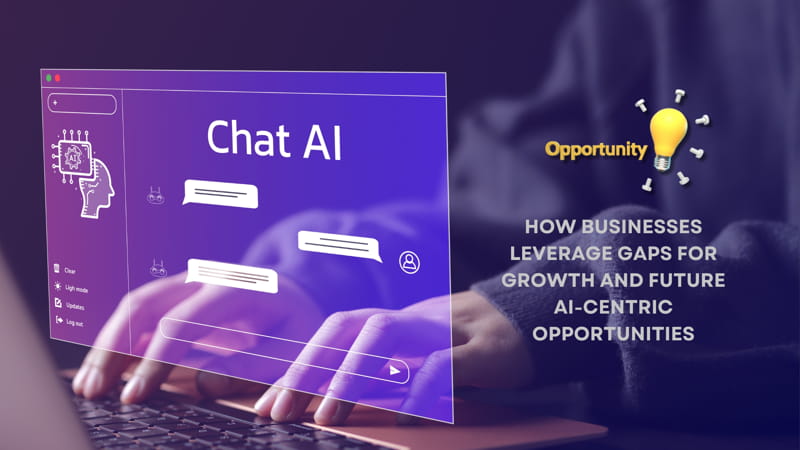Institutional voids refer to the absence or inadequacy of market-supporting institutions that facilitate business operations, such as regulatory frameworks, infrastructure, and information systems. These gaps often exist in emerging markets or underdeveloped sectors, creating challenges for businesses. However, for savvy entrepreneurs and companies, institutional voids represent untapped opportunities to innovate, dominate markets, and achieve outsized returns.
In this blog, we’ll explore the concept of institutional voids, how businesses have historically exploited them, and what future gaps—especially AI-centric ones—businesses can target for growth. We’ll also provide case studies, popular examples, and insights into how companies can stay ahead in an evolving global economy.
Understanding Institutional Voids
Institutional voids arise when the formal and informal systems that support business activities are missing or underdeveloped. These gaps can manifest in various forms, such as:
- Lack of Regulatory Frameworks: Weak or absent laws governing contracts, property rights, or consumer protection.
- Inadequate Infrastructure: Poor transportation, communication, or energy systems.
- Information Asymmetry: Limited access to reliable market data or consumer insights.
- Financial System Gaps: Underdeveloped banking systems or limited access to credit.
- Skill Shortages: A lack of trained professionals or educational institutions to support industry needs.
While these voids pose challenges, they also create opportunities for businesses to step in and provide solutions, often establishing themselves as market leaders in the process.
How Businesses Exploit Institutional Voids: Case Studies and Examples
1. Mobile Banking in Africa: M-Pesa
One of the most famous examples of exploiting institutional voids is M-Pesa, a mobile money transfer service launched in Kenya in 2007. At the time, Kenya’s banking infrastructure was underdeveloped, with only 20% of the population having access to formal financial services. M-Pesa leveraged the widespread use of mobile phones to create a platform for peer-to-peer money transfers, bill payments, and microloans.
By 2024, M-Pesa has over 50 million active users across Africa and processes billions of dollars in transactions annually. It filled a critical institutional void by providing financial inclusion to millions of unbanked individuals, transforming the economic landscape of the region.
2. E-Commerce in India: Flipkart and JioMart
India’s e-commerce boom is another prime example of businesses capitalizing on institutional voids. In the early 2010s, India lacked reliable logistics networks, digital payment systems, and consumer trust in online shopping. Flipkart, founded in 2007, addressed these gaps by building its own supply chain, offering cash-on-delivery options, and focusing on customer service.
Similarly, Reliance’s JioMart, launched in 2020, leveraged India’s digital revolution and the widespread adoption of affordable internet through Jio. By 2024, JioMart has become a dominant player in India’s online grocery market, integrating small retailers into its platform and addressing the void of organized retail in rural areas.
3. Ride-Hailing in Southeast Asia: Grab
Grab, founded in 2012, identified institutional voids in Southeast Asia’s transportation sector. The region suffered from poor public transport, unreliable taxi services, and a lack of digital payment options. Grab introduced a ride-hailing app that not only provided convenient transportation but also integrated mobile payments through GrabPay.
By 2024, Grab has expanded into food delivery, financial services, and even healthcare, becoming a super app that addresses multiple institutional voids across Southeast Asia.
Future Institutional Voids: AI-Centric Opportunities
As we move further into the digital age, new institutional voids are emerging, particularly in the realm of artificial intelligence (AI). Businesses that can identify and address these gaps will be well-positioned for future success. Here are some AI-centric voids to watch:
1. AI Governance and Ethical Frameworks
As AI technologies become more pervasive, there is a growing need for governance frameworks to ensure ethical use, data privacy, and accountability. Governments and regulatory bodies are struggling to keep pace with rapid advancements in AI, creating a void that businesses can fill.
Opportunity: Companies can develop AI governance platforms, tools for ethical AI auditing, or consulting services to help organizations navigate regulatory landscapes. For example, startups like OpenAI and Anthropic are already working on AI safety and alignment, but there is still significant room for innovation in this space.
2. AI Skill Gaps and Workforce Training
The demand for AI expertise far outstrips supply, creating a significant skill gap. According to a 2024 report by LinkedIn, AI and machine learning roles are among the fastest-growing job categories, with a 74% annual increase in demand.
Opportunity: Businesses can address this void by offering AI training programs, online courses, or certification platforms. Companies like Coursera and Udacity have already made strides in this area, but there is still a need for specialized, industry-specific AI training.
3. AI-Driven Healthcare Solutions
The healthcare sector faces numerous institutional voids, including limited access to quality care, inefficient diagnostic processes, and a lack of personalized treatment options. AI has the potential to revolutionize healthcare, but many regions and institutions lack the infrastructure to implement these technologies effectively.
Opportunity: Businesses can develop AI-powered diagnostic tools, telemedicine platforms, or predictive analytics systems tailored to underserved markets. For instance, Babylon Health has successfully used AI to provide virtual consultations and health assessments, but there is still vast potential in emerging markets.
4. AI in Agriculture and Food Security
With global food demand expected to rise by 50% by 2050, the agriculture sector faces significant challenges, including climate change, resource scarcity, and inefficient supply chains. AI can help optimize farming practices, predict crop yields, and reduce waste, but many farmers lack access to these technologies.
Opportunity: Companies can create AI-driven solutions for precision agriculture, such as drone-based crop monitoring or AI-powered irrigation systems. Startups like Farmers Edge and Taranis are already making progress, but there is still a need for affordable, scalable solutions in developing regions.
5. AI for Climate Change Mitigation
Climate change is one of the most pressing challenges of our time, and AI can play a crucial role in mitigating its impact. However, there is a lack of coordinated efforts and scalable solutions to address this global issue.
Opportunity: Businesses can develop AI-powered tools for carbon footprint tracking, renewable energy optimization, or climate risk assessment. For example, Google’s DeepMind has used AI to reduce energy consumption in data centers, but there is still significant potential for innovation in this space.
6. AI Agents: Unlocking New Business Opportunities
AI agents, also known as intelligent agents, are autonomous systems powered by artificial intelligence that can perform tasks, make decisions, and interact with users or other systems with minimal human intervention. These agents leverage technologies like natural language processing (NLP), machine learning (ML), and computer vision to automate complex processes, enhance customer experiences, and optimize operations. Businesses can benefit from AI agents by deploying them in various domains, such as customer service (e.g., chatbots like ChatGPT), sales (e.g., personalized product recommendations), and supply chain management (e.g., predictive analytics for inventory optimization). For instance, AI agents can handle 24/7 customer inquiries, reducing operational costs while improving response times and satisfaction. Additionally, they can analyze vast datasets to uncover actionable insights, enabling businesses to make data-driven decisions faster. By integrating AI agents into their workflows, companies can streamline operations, scale efficiently, and deliver hyper-personalized experiences, gaining a competitive edge in today’s AI-driven economy.
Conclusion: The Future of Institutional Voids
Institutional voids have always been a double-edged sword—presenting challenges for businesses while also offering immense opportunities for those willing to innovate. As we look to the future, AI-centric gaps represent the next frontier for entrepreneurial success.
Businesses that can identify and address these voids will not only drive growth but also contribute to solving some of the world’s most pressing problems. Whether it’s through AI governance, workforce training, healthcare solutions, or climate change mitigation, the potential for impact is enormous.
As the global economy continues to evolve, staying ahead of emerging institutional voids will be key to long-term success. By leveraging AI and other advanced technologies, businesses can turn gaps into opportunities, creating value for themselves and society at large.
References:
- LinkedIn 2024 Emerging Jobs Report
- M-Pesa Annual Report 2024
- World Economic Forum: AI in Healthcare (2024)
- United Nations: Global Food Demand Projections (2024)
- Google DeepMind Sustainability Report (2024)
By understanding and acting on these insights, businesses can position themselves as pioneers in the next wave of economic transformation.
FAQs on Institutional Voids and AI-Centric Opportunities
1. What is an institutional void, and why is it important for businesses?
An institutional void refers to the absence or inadequacy of market-supporting systems like regulatory frameworks, infrastructure, or information networks. These gaps create challenges but also present opportunities for businesses to innovate and fill the void. For example, M-Pesa addressed Kenya’s lack of banking infrastructure by introducing mobile money services, transforming the financial landscape. Institutional voids are important because they allow businesses to enter untapped markets, establish dominance, and achieve significant growth.
2. How can businesses identify institutional voids in emerging markets?
Businesses can identify institutional voids by:
- Conducting market research to understand local challenges and unmet needs.
- Analyzing gaps in infrastructure, regulations, or consumer access to services.
- Observing successful case studies (e.g., Grab in Southeast Asia or Flipkart in India) to identify patterns.
- Leveraging AI and data analytics to uncover hidden inefficiencies or underserved areas.
For example, AI-powered tools can help businesses analyze large datasets to identify gaps in healthcare, education, or agriculture in emerging markets.
3. What are some examples of businesses that successfully exploited institutional voids?
Several businesses have successfully exploited institutional voids:
- M-Pesa: Addressed Kenya’s lack of banking infrastructure by introducing mobile money services.
- Flipkart: Overcame India’s e-commerce challenges by building its own logistics network and offering cash-on-delivery.
- Grab: Solved Southeast Asia’s transportation and payment gaps by creating a ride-hailing super app.
- JioMart: Leveraged India’s digital revolution to address the lack of organized retail in rural areas.
These companies not only filled gaps but also became market leaders in their respective regions.
4. What are AI-centric institutional voids, and how can businesses leverage them?
AI-centric institutional voids are gaps in the adoption, governance, or application of artificial intelligence technologies. Examples include:
- Lack of AI governance frameworks to ensure ethical use.
- Skill gaps in AI and machine learning expertise.
- Limited access to AI-driven healthcare or agricultural solutions in developing regions.
Businesses can leverage these voids by:
- Developing AI governance tools or ethical auditing platforms.
- Offering AI training programs to bridge skill gaps.
- Creating affordable AI solutions for underserved sectors like healthcare and agriculture.
For instance, companies like OpenAI and Coursera are already addressing these gaps, but there is still significant room for innovation.
5. What future institutional voids should businesses look for, especially in AI?
Future institutional voids will likely revolve around:
- AI Governance: Developing frameworks for ethical AI use and data privacy.
- AI in Healthcare: Creating affordable diagnostic tools and telemedicine platforms for underserved regions.
- AI in Agriculture: Building precision farming solutions to address food security challenges.
- AI for Climate Change: Innovating tools for carbon tracking and renewable energy optimization.
Businesses that can identify and address these gaps will be well-positioned for future growth and impact.
Author Recommendations: The Future of Jobs: Fastest Growing and Declining Careers by 2030








One Response